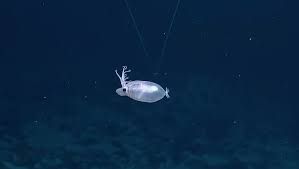Best Books on Parasites to Buy in January 2026
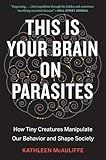
This Is Your Brain On Parasites: How Tiny Creatures Manipulate Our Behavior and Shape Society


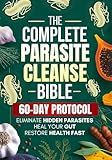
The Complete Parasite Cleanse Bible: A Natural Detox Program to Eliminate Hidden Parasites, Heal Your Gut and Restore Health Fast—Includes a 60-Day Protocol, Herbal Remedies, and Long-Term Protection


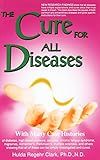
The Cure for All Diseases: With Many Case Histories
- COMPREHENSIVE 420-PAGE GUIDE TO HOLISTIC HEALTH SOLUTIONS.
- DURABLE PAPERBACK FORMAT FOR EASY READING AND REFERENCE.
- TRUSTED PUBLISHER WITH YEARS OF EXPERTISE IN WELLNESS LITERATURE.


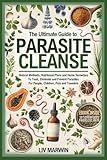
The Ultimate Guide to Parasite Cleanse: Natural Methods, Nutritional Plans and Home Remedies To Treat, Eliminate and Prevent Parasites For People, Children, Pets and Travelers


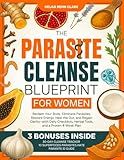
The Parasite Cleanse Blueprint for Women: Reclaim Your Body, Eliminate Parasites, Restore Energy, Heal the Gut, and Regain Clarity—with Daily Checklists, Herbal Tools, and a Proven 4-Week Plan


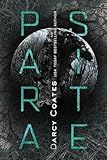
Parasite: Survival Sci-Fi Thriller with Body Horror Terror


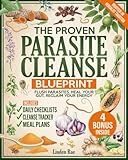
The Proven Parasite Cleanse Blueprint: A Structured Protocol with Daily Meal Plans, Checklists, and Remedies Rooted in Herbalist Tradition to Flush Parasites, Detox Your Gut, and Take Control Again


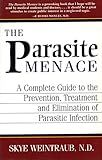
The Parasite Menace: A Complete Guide to the Prevention, Treatment and Elimination of Parasitic Infection
- HIGH-QUALITY READS AT AFFORDABLE PRICES
- ECO-FRIENDLY CHOICE: RECYCLE & REDUCE WASTE
- UNIQUE FINDS: RARE TITLES & VINTAGE EDITIONS AVAILABLE


A Closer Look at Parasites
No, we’re not meaning the Pond Doc when we say we are taking a closer look at parasites. We’re taking a closer look at those itchy little things that live on our fish and can make them sick. Parasites are found everywhere - in the food we eat and in our everyday living spaces. Some of them won’t hurt a thing and can be beneficial. The ones we’re attacking are the ones that are bad and cause problems for our pets with fins.
It’s not Flash Dancing, it’s called “Flashing” when your fish rub themselves against the sides or bottom of your pond. They often take a running start and dive up out of the water and down to the bottom of the pond in a single fluid movement. The first time we saw this “dance” we thought they were playing. Not so. They are itching and trying to find a tree to rub against. In most cases flashing indicates that they have some sort of parasite.
The itching is only the beginning of the trouble parasites cause our fish. Fish often injure themselves by scraping against sharp rocks or other objects. They may lose scales during their “flash dance”. Some parasites pierce the skin of the fish and suck out blood. Once the skin of the fish is broken, the fish become susceptible to opportunistic Aeromonas and Psuedomonas bacteria that enter through the wound or pinhole and cause havoc. Many times you’ll think we’re crazy for treating the fish for parasites when they obviously have an ulcer or other bacterial infection. The reason we do that is because the bacterial infection is most often a secondary condition caused by the parasite. You must get rid of the cause before you can get rid of the infection.
All parasites are attracted to the soft (and yummy) tissues of the fish’s gills which leads us to another tell-tell sign that your fish may be infested with parasites. Gill Flukes, for example, are notorious for damaging the gills. If the fish’s gills are damaged he will have difficulty breathing and may hang out by the water return or gulp at the surface of the water.
The only sure way to diagnose whether your fish have parasites and, most importantly, what kind of parasite is present is to have a mucus scraping done by a vet. Without a vet's diagnosis we choose to simply treat the pond as if we knew it had both Flukes and Ick. Not all parasites will respond to one type of treatment. Only a few of the microscopic parasites are treated with non-iodized salt while others such as Costia, Flukes, Fish Lice and Anchor Worm require a different mode of treatment. If a mucus scraping cannot be performed you are forced to “shoot from the hip” and treat for both. Our Parasite Pak helps simplify that process.
Let's take a closer look at the parasites that affect koi and goldfish:
Ich (Ichthyophthirius multifilis)
No doubt you’ve heard of Ich. In advanced stages you can see it with the naked eye. It looks like little white spots that eat away at the base of the fins and cluster around the gill openings. In early stages it takes a microscope to see these “circles” that move round and round. Inside the circle is a nucleus shaped like a horse shoe. We don’t want to wait for Ich to get so bad that it can be seen without the microscope. Ich kills - preferring goldfish to the bulkier koi, but still a threat to koi as well. This is only one of two parasites that we still can eradicate with high doses of salt. Many of the others have lost their sensitivity to salt.
Chilodinella
aka "Killer Don". This deadly little fellow likes cold water. He flourishes in water temperatures lower than what is needed for the fish’s immunity system to kick in, making it more dangerous to the fish during the cooler months of spring. In fact, most parasites are considered cold water inhabitants. When it’s alive, Chilodinella is shaped like an elongated heart. When dead, Chilodinella is perfectly round with what appears to be air bubbles inside. This is the other parasite that still can be treated with salt.
Costia
Costia is another parasite that is active in cold water. Costia has been found in water just above freezing. This is a tiny parasite, even in microscopic terms, but it’s affect on fish when allowed to infest a pond is not so tiny. If left unchecked Costia could wipe out a whole pond of fish. Costia is the first of the parasites that we've seen become immune to the effects of salt. Alternative methods of treatment are now necessary.
Trichodina
Quite an interesting subject to view under the power of a microscope, Trichodina looks like tiny parasols or flying saucers. Good news. Trichodina isn’t as bad as the rest and normally just makes the fish itch. Bad news. It does help introduce bad bacteria into the internals of the fish. As we pointed out earlier, itching causes the fish to scratch (or flash) and the fish can lose scales or puncture its protective skin and mucus coat, allowing harmful bacteria to enter the body. Trichodina thrives in the muck in the bottom of the pond. Thorough pond cleanings should eliminate the threat of this parasite. This parasite used to be able to be treated with salt but, like Costia, is now immune and has to be treated by other medications.
Flukes
Oh, the dreaded Flukes. Under the microscope Flukes appear to be tubes that move like slinkies with funny-looking heads at one end. Flukes are one of the most common and dangerous parasites. They actually carry Aeromonas and Pseudomonas bacteria which are responsible for causing sometimes incurable ulcers in fish. And -- flukes are very fertile. Once you get rid of the adults you must re-treat to get the babies that have hatched. Salt will not touch flukes.
Anchor Worm
These are big enough to see with the naked eye. They look like a worm hanging off the side of the fish. They attach themselves and hang on for dear life. We don’t suggest taking a pair of tweezers and pulling them off because you can leave the head of the Anchor Worm in the fish and the Anchor Worm will survive. In 9 years we've only seen perhaps 3 or 4 cases of anchor worm. The most recent was in our own brand new pond and how they got there -- we simply do not know!
Fish Lice (Argulus)
Fish Lice is a crustacean parasite that is very easy to identify since you do not need a microscope to see it. They also are not commonly seen. The Doc’s seen only three cases of Fish Lice in the last few years and I’ve only seen one. I must admit I was excited to see it! A customer brought us a bowl full of them so I could see them in real life. They were green and you could see every part of their anatomy - all 10 legs and tiny lobster tail.
Prevention - The Best Medicine
It’s hard to prevent parasites from entering your pond environment. Amphibians such as frogs and turtles track them in. Birds can “drop” them in. You can’t blame poor pond husbandry. You can, however, do a few things to ward off any heavy infestations. By far, the easiest way to spread deadly parasites is to introduce new fish or plants into your pond.
Here we go again - preaching the perils of not quarantining and treating new fish. The Doc witnessed a landscaper who purchased fish from a source known for its vast array of different deadly parasites - a source from whom we have in the past purchased fancy goldfish and expected a certain percentage to die before we could cure them of their parasites. This landscaper, who shall remain nameless, selected fish for different clients and had them bagged and tagged with each client’s name for delivery to their pond later that day. He didn’t care to isolate them nor did he care that he was infecting a customer’s pond with fish-killing parasites. Perhaps he didn’t know. Perhaps he didn’t care to know. On this particular day by the time The Doc returned to the store to place the new fish under quarantine and treat them we had already lost a couple. Upon doing a microscopic biopsy The Doc found the fish literally eaten up with both Flukes and Ich. I must point out that this supplier is NOT BlueRidge Fish Hatchery. BlueRidge Fish Hatchery is our preferred (and favored) supplier of koi and goldfish.
Moral of the story and to make a long story short: Protect your existing koi and goldfish by quarantining and treating any new arrivals -- including plants!
New plants are not totally innocent of bringing in parasites. Parasites can live on plants for a short time and plants can have live parasites on them when you introduce them into your pond. Plants that have been kept in ponds with fish are more apt to have parasites -- and there is no way to know for sure. The safest thing to do is to treat the plants with Cure-Ick before introducing them into your pond.
Treating for Parasites
As stated earlier in the article different parasites are treated differently. Some react to a salt treatment - most don't. A treatment for Flukes will not work on Costia and vice-versa. Whether treating a quarantine tank or the pond for parasites (if you don't know which parasite(s) is present) you must treat with two separate methods. Very important: Salt is the only treatment that can be administered along with other treatments and it's use is limited with some products. Treat the pond or quarantine tank with one product at a time and make water changes in between products!
The Famous Salt Treatment
Kills Ich and Chilodinella
Nothing is more natural and more beneficial to your fish than performing a salt treatment at the beginning of the season. Non-iodized, mineral-free salt without YPS anti-caking additive in the correct amount kills ich and chilodinella. It helps the fish develop and maintain a strong slime coat naturally. A healthy slime coat is a must for a healthy fish. It protects the skin of the fish while containing substances the fish’s body uses to fight off infection. There’s no reason to use commercial products that claim to build up the slime coat. They also coat the gills, making it more difficult for the fish to breath. Use salt instead. Salt also will not harm the beneficial bacteria (or any bacteria for that matter) in your filter. Salt is a wonderful thing to use whenever something is wrong in the pond. It's important to know how to use salt correctly to get the most benefit from it.
Non-iodized, mineral-free salt is the safest and least expensive treatment to kill Ich and Chilodinella. It will kill certain plants also so you’ll need to remove them to a holding tank before you begin and treat them separately with Cure-Ick. Use 3 lbs. of salt per 100 gallons of water. It sounds like a lot of salt - and it is! Spread 1/3 the total dosage of salt in the pond on the first day, 1/3 on the second day and the rest on the third day. Leave the salt in the pond from 14 to 21 days to allow it do it’s thing. Then make a 50% water change, followed by another 50% water change a few days later to dilute the salt. We do not suggest leaving the salt in for more than the 21 days.
Salt can be used in this strength along with most fluke medications. When treating with Cure-Ick or other medications designed for ich, lower the salt concentration to 1/3 the dose.
Treatments for Ich, Chilodinella, Costia and Trichodina
For the most part, this group of microscopic parasites cannot be seen with the naked eye. Ich is the only one that manifests itself as white specks when it is in an advanced stage. If we KNOW our parasite is Ich or Chilodinella we will do a salt treatment. Otherwise, we will treat the pond or quarantine tank with one of the following products. Another reason for using one of these products instead of salt would be if you are treating a pond that is heavily planted. Sometimes it's the convenience of not having to remove all the plants is well worth the extra money.
Cure-Ick™
This product is best used during the warmer months. It will not work well in water temperatures colder than 62 degrees F. It requires two treatments several days apart and a 20% water change in-between treatments so that if any of the medication is still active you do not overdose the pond. A 16 oz. bottle will treat a pond of 2000 gallons with the two necessary treatments. The Pros of Cure-Ick: It's bottle design makes it easy to dose. The Cons of Cure-Ick: It will kill nitrifying bacteria so by-passing the biological filter is necessary when treating. It doesn't work in lower water temperatures.
Cure-Ick is part of our easy-to-use Parasite Pak.
ProForm-C™ (The Doc's Choice)
ProForm-C is a "gentle" mixture of malachite green and formalin. It requires three treatments instead of the two with Cure-Ick but it's used once a day and the treatment is over in three days with w 25% water change between treatments. A quart bottle treats a pond of 3200 gallons three times (for the complete treatment) and is comparably priced with Cure-Ick. The Pros of ProForm-C: It works in lower water temperatures (down to 50 degrees F). It does not harm nitrifying bacteria so by-passing the biological filter is not necessary. It also treats fungus. Cons of ProForm-C: It doesn't come in that neat easy-to-dose bottle. There's no smaller than 32 oz. size "yet" and you must do water changes in between the 3 treatments.
Treatments for Flukes, Anchor Worm and Fish Lice (Argulus)
The parasites belonging to this group are a little more structured than the microscopic ones and require a different form of treatment. Anchor Worm and Fish Lice can be seen on the fish from pond-side while it takes a microscope to see Flukes. Salt won't touch these parasites but the treatments for them can be used along with the high doses of salt used during a salt treatment. It's not a bad idea to perform a salt treatment along with any of these treatments for the other benefits.
Fluke-Tabs™
This product is best used during the warmer months. It will not work well in water temperatures colder than 62 degrees F. Two treatments are required several days apart and a 20% water change in-between treatments. Each pond-sized tablet treats 100 gallons. A bottle contains 20 tabs so a bottle will treat 1000 gallons with both dosages needed. Fluke Tabs are also available in a card of small aquarium size tablets that treat 10 gallons each. In a system that does not have a well-seeded filter it can harm the nitrifying bacteria. The Pros of Fluke Tabs: The tabs are easy to dose. Tablets are perfect for dosing smaller quarantine tanks and aquariums. The Cons of Fluke-Tabs: Can interfere with nitrifying cycle. More expensive than Anti-Fluke.
Anti-Fluke™
This product is best used during the warmer months. It will not work well in water temperatures colder than 62 degrees F. It requires two treatments several days apart and a 20% water change in-between treatments. A 16 oz. bottle will treat a pond of 2000 gallons with the two necessary treatments. The Pros of Anti-Fluke: It's bottle design makes it easy to dose. Comparably inexpensive. The Cons of Anti-Fluke: It can interfere with the nitrifying cycle. It doesn't work in lower water temperatures.
Anti-Fluke is part of our easy-to-use Parasite Pak.
Prazi-Pond™ (Praziquantel)
We love this product but it is more expensive than the rest. It works in lower temperatures (down to 50 degrees) and requires only one treatment and no water change. We've seen almost instant results from its use. Prazi-Pond does not harm beneficial nitrifying bacteria so by-passing the filter is not necessary. A 10 gram bottle treats 1000 gallons. The Pros of Prazi-Pond: Requires only one treatment and with no water changes afterward. Does not harm nitrifying bacteria. Works in cooler water temperatures. As a bonus, it kills any internal parasites. The Cons of Prazi-Pond: It's more expensive than other treatments.
Potassium Permanganate
I cannot do an article about parasites without mentioning potassium permanganate. For years we used potassium permanganate at the store and on our personal fish. It basically kills anything in its path - parasites, bacteria, fish... It is a very harsh treatment that is difficult to perform -- even for pros like us! A PP treatment performed incorrectly or over-dosing just slightly with PP can cause death and gill damage. It's for that reason we've decided that we aren't going to "push" PP treatments anymore. There are so many safer routes to take. If, however, you insist that you would like to do a PP treatment - please do it with utmost care. Read our article "The Professional Way to PP".
The Doc's Prescription Parasite Pak or the ProForm-C and Prazi-Pond
To make it easier for folks to treat whatever parasite might be present in the pond or to clean up new fish we've put together a treatment regimen consisting of a bottle each of Anti-Fluke and Cure-Ick, both products by Aquarium Products. Along with it comes a few more instructions from Pond Doc. Our aim was to make it easy for our customers to get both products they need to treat the pond for parasites. You can, of course, order the Parasite Pak. If by-passing the filter is impossible or if treating in lower water temperatures we would suggest instead of the Parasite Pak you purchase and treat with ProForm-C and Prazi-Pond. The regimen with these two products would be to treat with the ProForm-C in pond water with less than .01% salt then, when that treatment is completely over, wait a couple of days, change out about 20% of the water then treat with the Prazi-Pond. At that time, if you would like to do a salt treatment along with the Prazi-Pond, feel free to do so.
